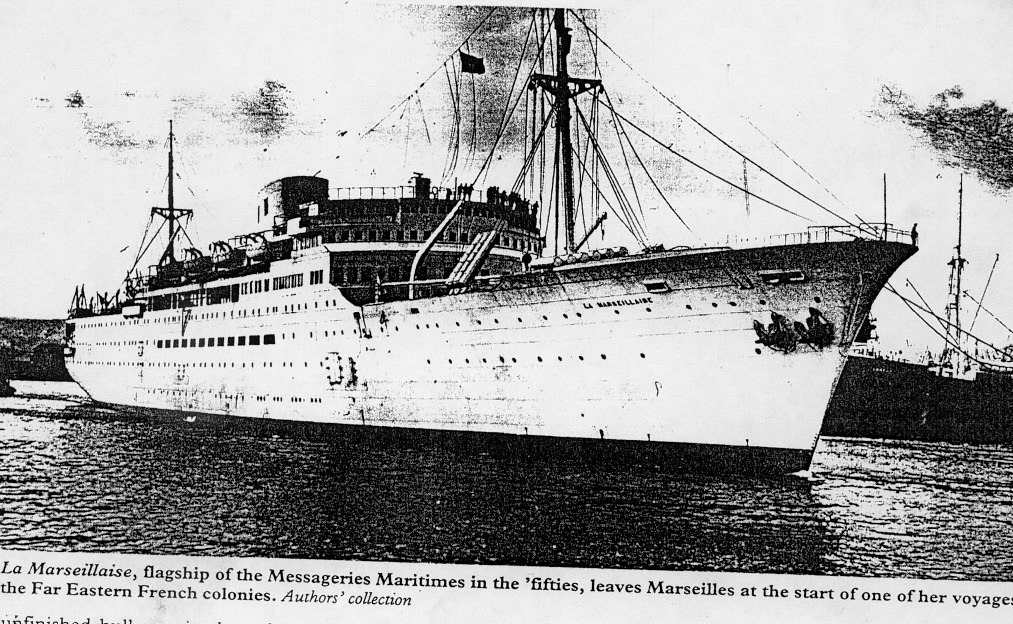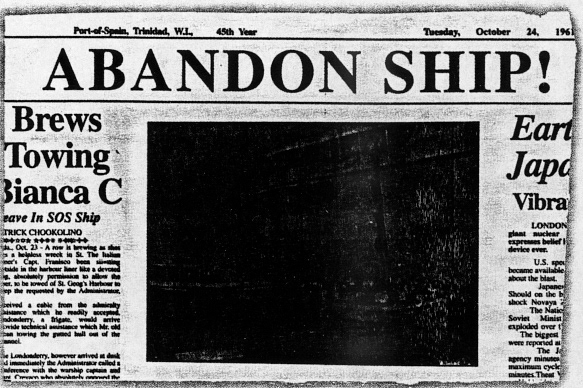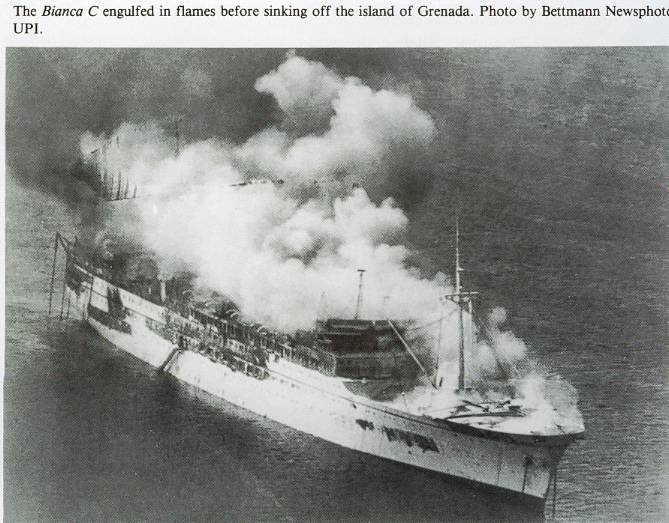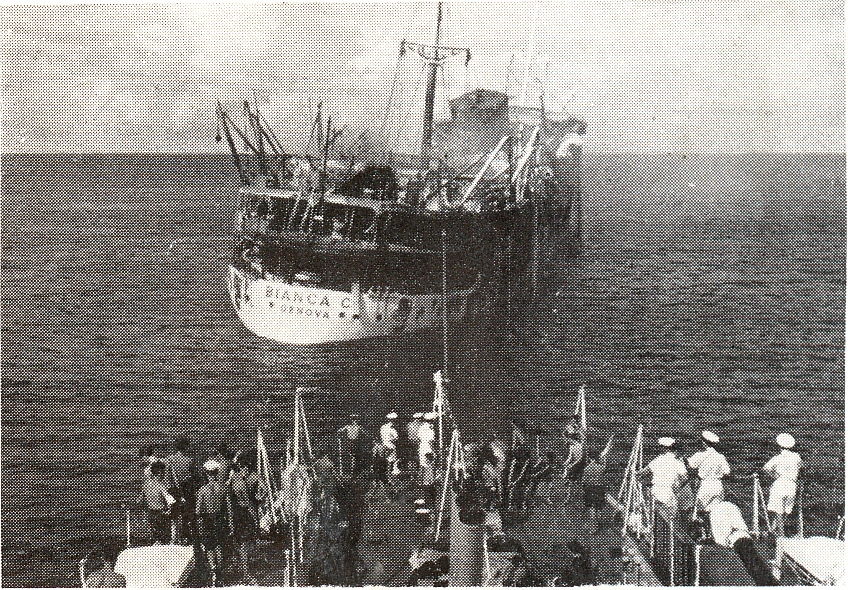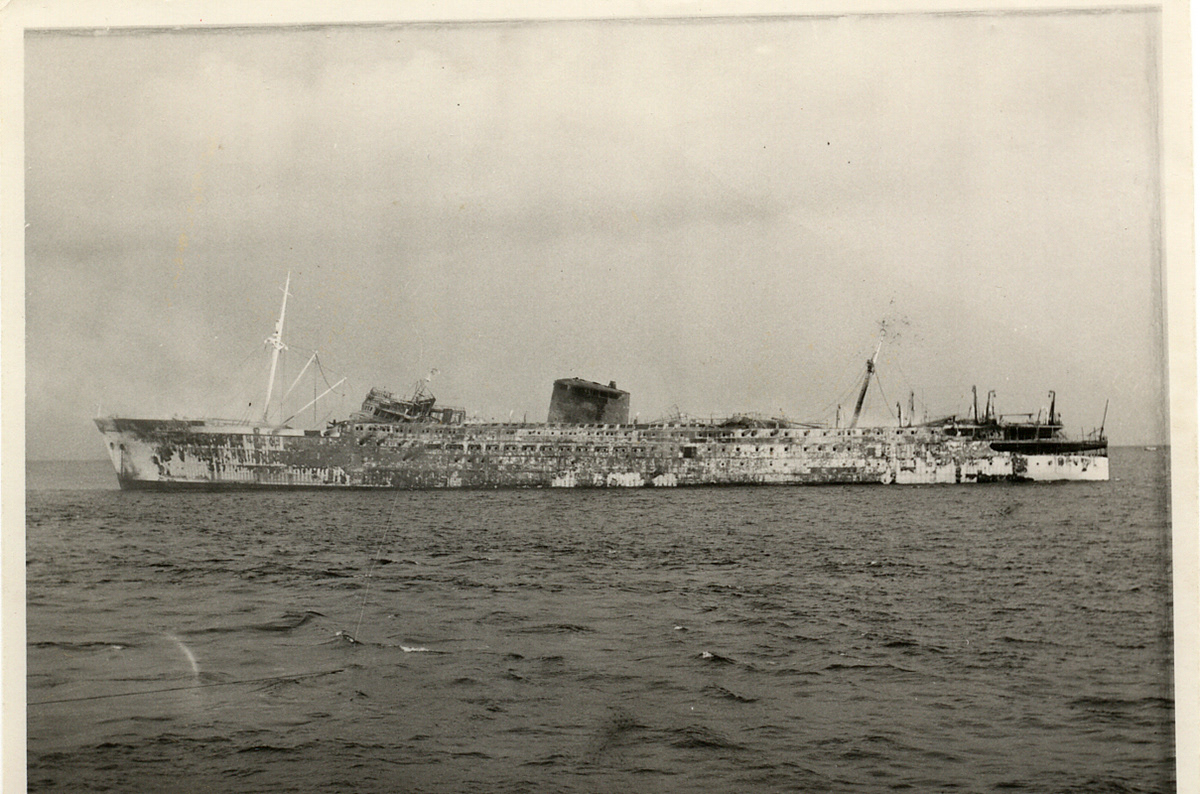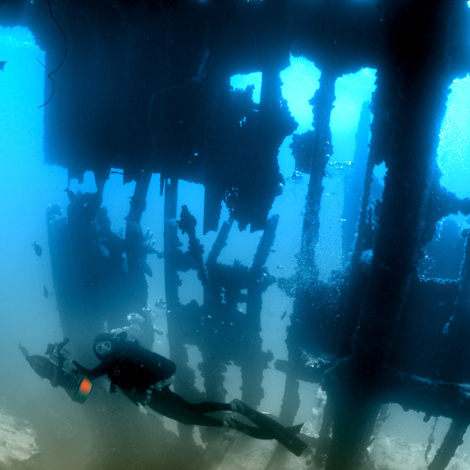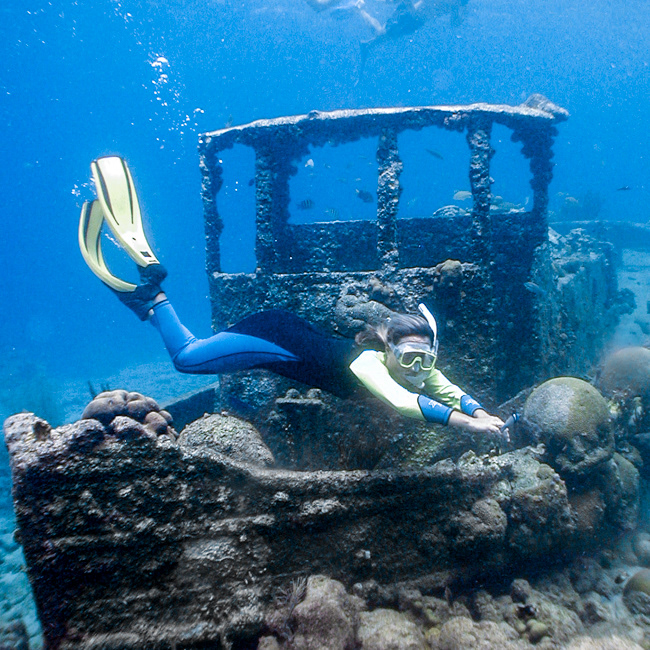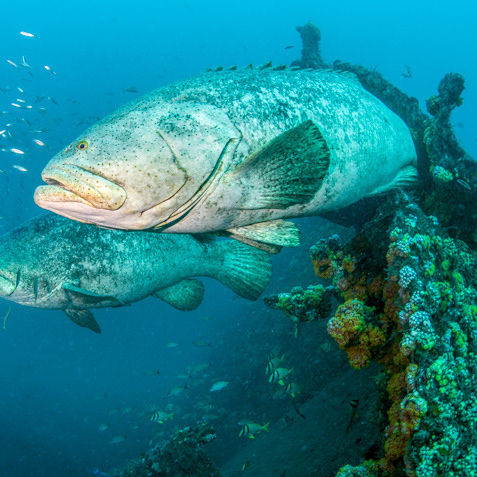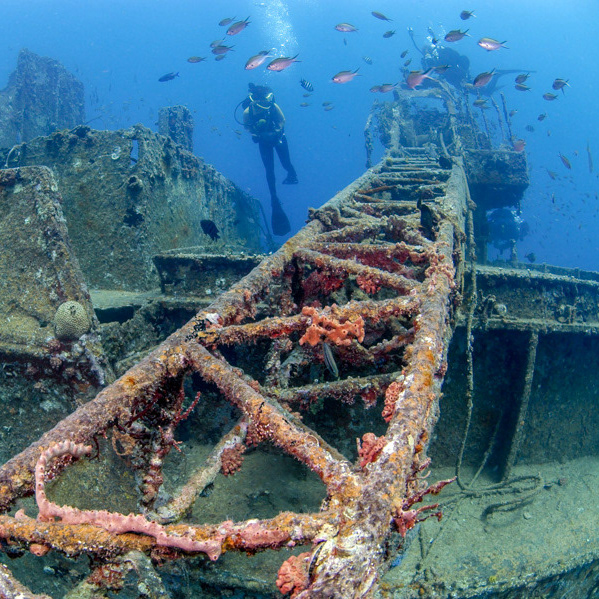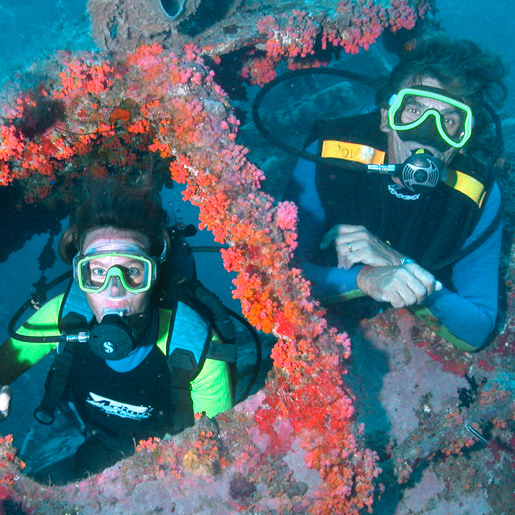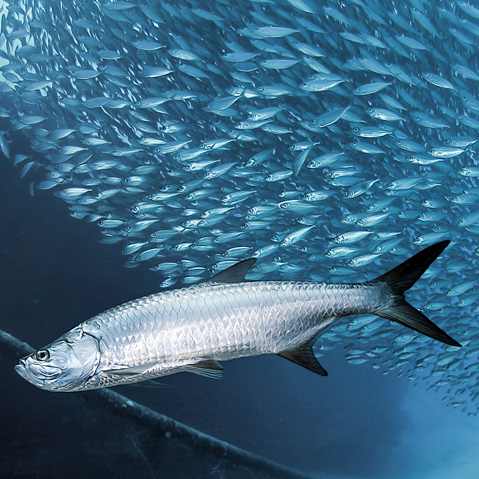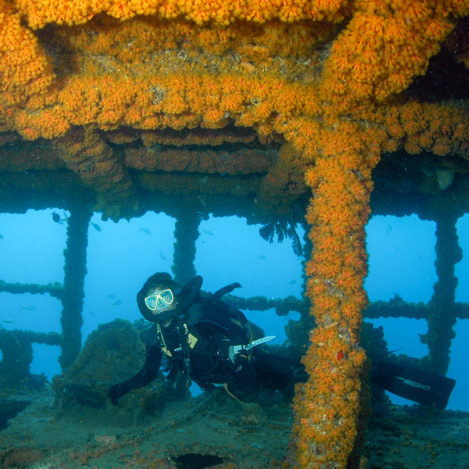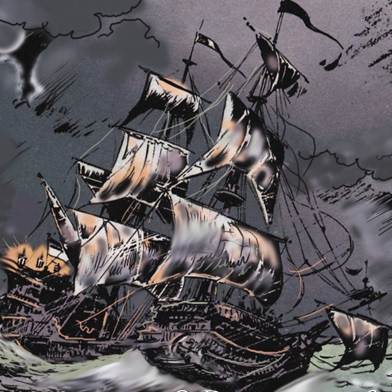The Bianca C, Grenada shipwreck by Cathy Salisbury
For the cruise ship passengers of the Bianca C, their port call in Grenada was going to be an experience they would never forget.
The morning of Octobers 22, 1961, Bianca C, a Costa Line cruise ship, was about to anchor near the town of Saint George in Grenada when there were a series of explosions onboard. The captain quickly disembarked the passengers with the help of local rescue and fishing boats. Thanks to the speed of the maneuver, there were no casualties. The 362 passengers, not really knowing what was going on, found themselves in their pyjamas on the quays of St. George!
The Costa Line's steamer was smouldering and smoking. For fear that the vessel might sink in the harbour, the burning vessel was towed by an English frigate toward the Pointe de Saline. But the wind disrupted the rescuers' program. As the vessel left the harbour, gusts of wind shifted everything. The tow line broke and the giant cruise drifted off. The Bianca C cracked in two and began to sink. In a whirlwind of flames and smoke, the carcass disappeared beneath the surface a few miles off the Pointe des Salines.
The story of the sinking of the Bianca C is very much part of local folklore. Ask anyone on the island. Everyone in Grenada knows someone who helped with the rescue of the passengers. The owner of the Bianca C wanted to than the inhabitants of Grenada and gave the island a monument to commemorate the event. Standing at the harbour is the statue of a Christ.
The Bianca C, Grenada shipwreck by Dominique Serafini
Years passed, and time forgot the Bianca C until the day local divers rediscovered the wreck, laying on a sandy bottom at 200 feet. Initially it was the salvage-driven divers that were interested in the vessel. The first visitors went in search of dinner plates, silver cutlery and bronze ornaments. They also went in search of the wine cellar where there was champagne, wine, cognac and whiskey. Hundreds of bottles of whisky were still stocked inside. Several divers disappeared in the dark holds in search of the treasures on board and the cellar with spirits. Some did not return.
A visit of the wreck does not, at first, appear difficult because the bridge of Bianca C is barely at 110 feet. But the current is quite often strong on the wreck and that complicates things. The dives are generally drift dives with a surface buoy. And to cover the full 536 feet of the deck, you have to be very good on air. In fact, several sequential dives (with long surface intervals) are necessary to discover this immense wreck. The rear of the ship, where the explosion took place is turned to port. The swimming pool is still full, but now have fish swimming in it. The corridors of the ship make for mysterious dark labyrinths.
Shelter inside the twisted metal bow you can escape the current, From the ship's bridge, you can gaze out in the blue at eagle rays and schools of barracudas swimming the length of the wreck . On the sand, at 200 feet in front of the ship lies the anchors. If you turn and face the bow, it is quite an incredible site - the impressive gigantic dark bow of the ship, covered with large purple gorgonians and coral whips against the sunny surface light.
It has been in the company of Peter and Gerlinda Seupel of Aquanauts Grenada that we have been able to do multiple dives on this wreck to do photography and painting. You can never grow tired of the Bianca C, as there is always something new to see on the wreck, a new corner to explore.
The Bianca C, Grenada shipwreck by Cathy Salisbury
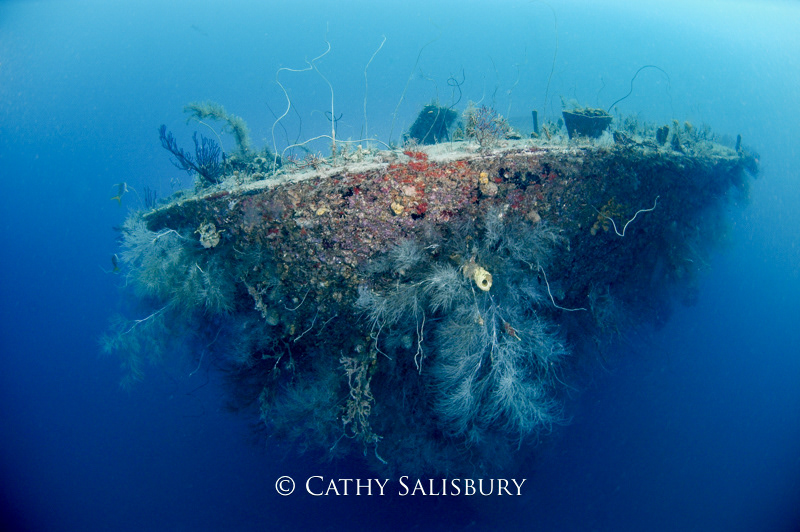
The Bianca C, Grenada by Cathy Salisbury
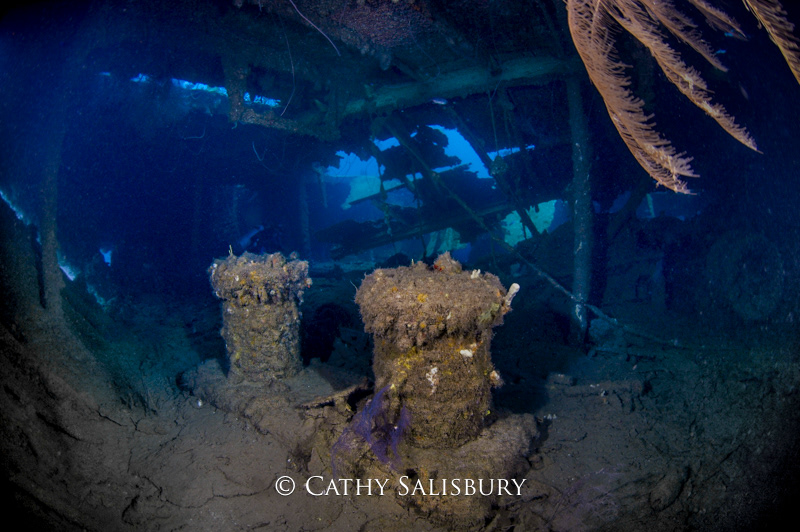
The Bianca C, Grenada by Cathy Salisbury
Diving on the Bianca C is not a year-round activity. When the current draws the waters of the Orinoco to Grenada, the wreck disappears in a greenish mist. It's time to put away your fins and go to the library to study the mysterious and tumultuous history of the Bianca C. Because the Bianca C, sailing under the Italian flag, was once a French vessel!
The construction of the large cruise ship, a Messageries Martimes project, begun in December 1938, with plans for a quick turnaround.
Alas, history didn't follow the established plan. The works begun at La Ciotat but was interrupted by the declaratory war of 1939, by the fall of the government and the occupation of France by the Nazis. The construction was supervised of the German officers of the Kriegsmarine.
The french workers sabotaged and blocked the construction of the ship. The exasperated German officers took hostages to put an end to the strikes until such a time that the hull was finished.
The Bianca C, Grenada shipwreck by Cathy Salisbury
During the collaborative period, the Vichy government and the German authorities named the liner Marechal Pétain. Marechal, here we are! You, the savior of France! Pom ... popom! And it was with these pompous and nauseating innuendos that on June 10, 1944, this great modern liner was launched... two days after the landing of Normandy!
Towed from La Ciotat to the Etang de Berre, Marechal Pétain could not take the sea and remained at the wharf until the end of the war. As the European fortress cracked under the battering by the allies, the glorious Marechal sought exile with his clique of frightening Germany collaborators, before being subjected to the judgment of history and imprisoned until the end of his life at the island of Yeu.
Still in La Ciotat, on August 21, 1944, the ship's mooring lines broke and it started drifting, crashing into a railway bridge. Badly damaged, it went back to the dry dock in La Ciotat and it was not until 1949 that the ship was sea-worthy. Ten years after signing the original construction order, the Compagnie des Messageries Maritime finally got its beautiful steamer, renamed La Marseillaise.
The Bianca C, Grenada shipwreck by Cathy Salisbury
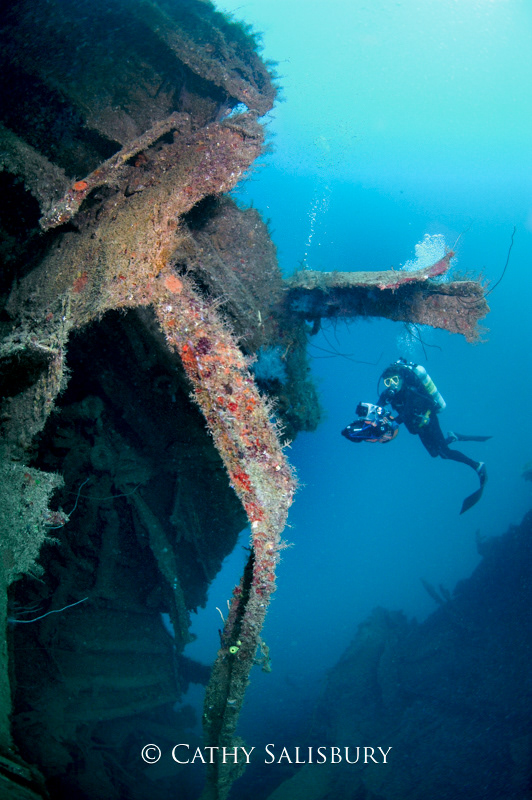
The Bianca C, Grenada by Cathy Salisbury

The Bianca C, Grenada by Cathy Salisbury

The Bianca C, Grenada by Cathy Salisbury
On April 18, 1949, La Marseillaise made its first cruise, heading towards Indochina. On September 5th, the ship reached Saigon. Luxuriously designed and equipped with powerful 31,000 hp engines, "La Marseillais" could reach 20 knots. She became the flagship of the company. 536 feet long, 75 feet wide, it could hold 341 passengers in first class and 302 passengers in economy.
In 1954, Indochina gained independence and La Marseillaise needed to change its route once again again, resuming service to the Mediterranean. The ship brought passengers to Alexandria until September 1956 when the Suez Canal crisis broke out. The liner was requisitioned to serve as a hospital ship, transporting troops to Limassol and Bizerte, until its return to Marseilles in February 1957.
La Marseillaise was put up for sale. Purchased by an Italian, the boat's names was changed to Arosa Sky. Reshaped, it returned to service, this time with an Atlantic route. In June 1958, the Arosa Sky headed to New York but a fire broke out on board. The ship started to appear cursed and the Italian owner decided it best to break free and auction off the ship.
The Costa Line bought the boat and the boat went back again to the shipyard, this time to change its silhouette and repainted the hull white. On 2 March 1959, the cruiseship began its new career with a new name - the Bianca C. It sailed from Genoa to the Caribbean and onto New York. The Bianca C arrived in New York on Dec 22, 1959. After a year or so, cruises in the Caribbean really started to become successful. It seemed that the Bianca C had finally hit its stride... until that morning in October 1961, when it sank in Grenada in a ball of flames.
Since that time, the former Maréchal Pétain, La Marseillaise, Arosa Sky, and Bianca C has had its last name change. This time it is the divers who continue to visit the wreck who have baptized the ship - The Titanic of the Caribbean - a name that will always have and that suits it well.

